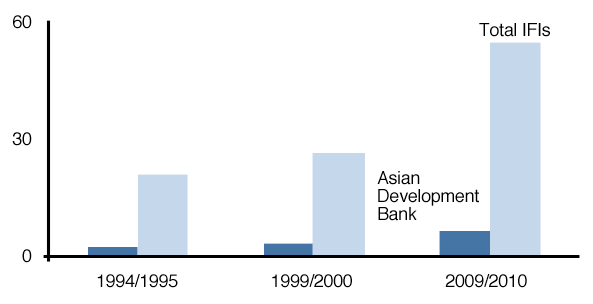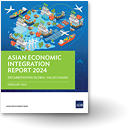Making Aid for Trade more efficient in Asia
Aid for Trade is being billed as the new path to plugging into Global Value Chains (GVCs). What’s more, the evidence from the World Trade Organization’s (WTO) 4th Global Review of the state of Aid for Trade (AfT) initiative on 8 July 2013 suggests that it is working.
A changing global AfT agenda
The global agenda on AfT has taken a different direction in the two years since the last Global Review. In 2011, the WTO directed the world’s attention to case stories that provided evidence of the positive development impact of AfT interventions.
By contrast, last week’s Global Review characterized AfT as role as a link to GVCs. This signals a very different perception of AfT’s role in today’s trading environment. We have moved away from viewing AfT as a stand-alone source of development assistance to its role as a tool in establishing an enabling environment for the private sector.
Cast in this light, Asia’s experience with AfT has been particularly successful. In the forthcoming co-chairs report: Aid for Trade in Asia and the Pacific: Driving Private Sector Participation in Global Value Chains, ADB and the co-chairs Japan and Cambodia identify three trends in Asia’s AfT experience that are impacting the global agenda on AfT.
Public-private dialogues
The first trend is the rise of public-private dialogues (PPD). These are regular dialogues with the private sector to help governments understand where bottlenecks for private sector activities exist, and thus where AfT is most needed. PPD can take a range of forms from high level dialogues at the Ministerial level to informal or periodic contacts with relevant private sector actors.
When the state and business interact effectively, they can promote a more efficient allocation of scarce resources, conduct a more appropriate trade and growth policy, remove the largest and most binding obstacles to growth and create wealth more efficiently.
AfT supports other resource flows
The second feature of Asia’s AfT environment that has implications for the global agenda is the diversity of financial resources that target trade-related capacity building. Such resources can include both ODA and non-ODA financial flows such as development bank loans, export-import (EXIM) bank loans, and trade insurance as well as private bank loans and investments.
Figure 1. Non-ODA Flows by Multilateral Organizations (Millions $)

Source: Data from OECD (2012b), Development Co-operation Report 2012, Table A13.
Figure 1 illustrates the growing volume of non-ODA resources targeting Asia via multilateral institutions. To the extent that these flows follow AfT’s targets, they can amplify its positive impacts on trade capacity.
In developing countries, many gaps exist where potential exporters may not be able to reach target markets. By using varied sources of funding and targeting, trade capacity assistance can address these gaps.
South-South Cooperation
The third lesson that Asia’s experience with AfT can offer to the trajectory of the global AfT program is to underline the importance of South-South assistance as new source of development cooperation in Asia. Globally, there has been a greater focus on the emerging economies as sources of economic dynamism. In Asia, South-South cooperation has long been an import feature of the trade and development environment.
In Asia, South-South infrastructure projects and initiatives to transfer technical skills are particularly noteworthy. Also, business connections are increasingly being formed between developing countries as regional value chains are created.
What these three trends say about Asia’s AfT environment is that increasingly, the private sector is acting as a key development partner. This fits with the new reality of global trade where manufacturing is characterized by trade between countries that specialize in particular segments of a production chain.
A strong undercurrent of the global AfT paradigm is the need to transition away from aid into more sustainable resources that can contribute to trade capacity over the longer term, such as investment. Asia’s experience with creating an enabling business environment can provide an important example for other developing countries as they seek to transition from "aid for trade" to a more sustainable focus on "investment for trade."




